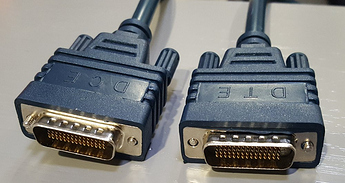Hello Sameh
In order to understand this, we need to understand the concept of Data Terminal Equipment (DTE) and Data Circuit-terminating Equipment (DCE).
Serial connections are usually used for WAN connections using some point to point technology such as Frame Relay, or PPP. When a router connects with a serial cable, it usually connects to some box that the telco brings to the customer premises. In such a scenario, the DCE is the telco box, and the DTE is the router. The clock rate can only be configured on the DCE. The DCE sends the clock rate to the DTE, and this determines the speed of the link. The DTE can be configured with a clock rate threshold, which simply specifies the minimum clock rate that it will accept from the DCE.
Now when using real Cisco devices in a lab environment, if you want to connect them using serial connections, you need those DCEs in between them to provide the clock rate. However, in order to avoid having to connect additional equipment, it is possible to connect two Cisco devices back to back over their serial cable, using a special DTE/DCE cable.
In this case, one of the two routers must play the role of the DCE and provide the clock rate. Notice how the cable is labelled DCE, and DTE? The router on the DCE side must configure the clock rate, while the one on the DTE side must receive the clock rate. If you are on the DTE side, then the router will not have the
clock rate 200000 command available, but will have the clock rate threshold command available.
Note that this behaviour is observed only for physical equipment. If you are using GNS3, then both DTE and DCE don’t have any effect. You should be able to configure both ends of the connection with a clock rate. Even in the lesson, Rene configures both ends in this manner. Even if you don’t set up a clock rate, the link should still function.
Can you share with us what simulator you are using? It may be that the behaviour has changed as updates to simulators are being made.
This could be due to many things. It may be the simulator it may be a configuration issue. Take a look at this Cisco Community Thread which includes some solutions that various users have shared.
You’ll have to do a bit of troubleshooting on this one as you may need to reconfigure from scratch. Let us know how it goes!
I hope this has been helpful!
Laz
